Seleccione este tipo de licencia cuando esté desarrollando una aplicación app para iOS, Android o Windows Phone, y vaya a incrustar el archivo en el código de su aplicación móvil. va a incrustar el archivo fuente en el código de su aplicación móvil.
DIN® Next
por Monotype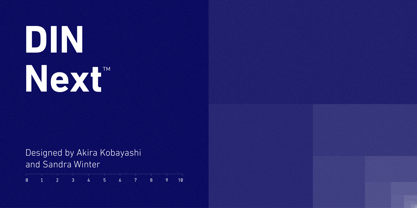
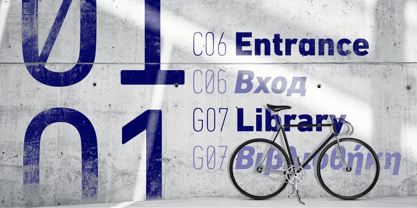
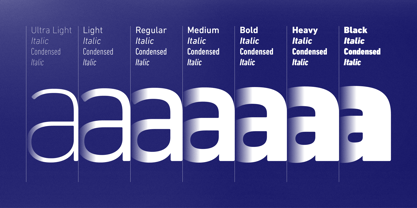
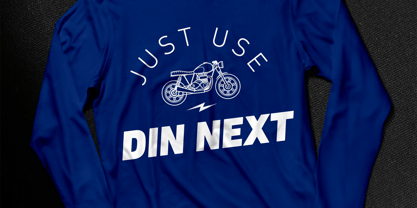
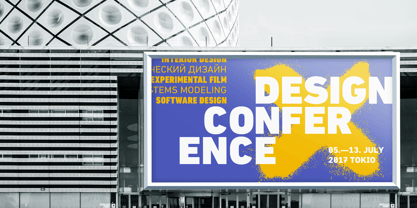
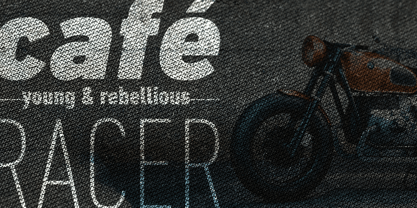
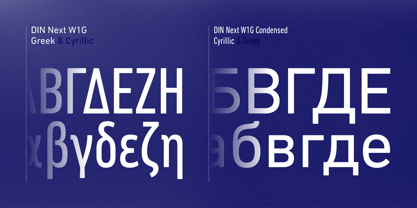
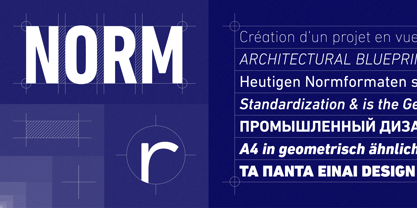
- Aa Glifos
-
¡Mejor PrecioPaquetes de familia
- Estilos individuales
- Especificaciones técnicas
- Licencias
DIN Next Family Pack
14 fuentesPor estilo:
$16.42
Paquete de 14 estilos:
$229.99
DIN Next Family Pack
14 fuentesPor estilo:
$16.42
Paquete de 14 estilos:
$229.99
DIN Next Condensed Family Pack
14 fuentesPor estilo:
$12.28
Paquete de 14 estilos:
$171.99
DIN Next Condensed Family Pack
14 fuentesPor estilo:
$12.28
Paquete de 14 estilos:
$171.99
Sobre la familia DIN Next Fuente
DIN siempre ha sido el tipo de letra por el que uno siente predilección, el que quería usar pero no se atrevía porque su gama de pesos y anchos era limitada y lo hacía menos útil de lo que podría ser. El diseño centenario ha demostrado ser atemporal, pero los casos de uso modernos exigían una actualización, que dio como resultado DIN Next, una versátil familia sin gracias que nunca pasará de moda. Este diseño clásico convertido en imprescindible incluye siete pesos que van del claro al negro, cada uno de los cuales tiene su contrapartida complementaria en cursiva y condensada. La familia también incluye cuatro diseños redondeados, que amplían la gama y la usabilidad básica del concepto original. DIN Next también cuenta con un conjunto de versalitas, cifras de estilo antiguo, subíndice, superíndice y varios caracteres alternativos. Su predecesor, el DIN, un diseño del siglo XX por excelencia, se basaba en formas geométricas y estaba destinado a señales de tráfico y documentación técnica. La actualización de Akira Kobayashi introdujo ligeros cambios en el diseño, redondeando los ángulos de las esquinas, antes cuadrados-de descuento , para humanizar la familia. Arraigado en más de 100 años de historia, es seguro decir que siempre habrá una demanda para el diseño DIN, y gracias a DIN Next, ahora es tan utilizable como deseado. Te preguntas con qué combinará a la perfección? Eche un vistazo a Agmena™, Bembo® Book, Cardamon™, Joanna® Nova, FF Quadraat® y Quitador™.
Destacado en: Mejor Fuentes para logotipos, Mejor Fuentes para sitios web, Mejor Fuentes para tatuajes, Mejor Fuentes para TikTok
Diseñadores: Akira Kobayashi, Sandra Winter
Editorial: Monotype
Fundición: Monotype
Propietario del diseño: Linotype
MyFonts debut: null
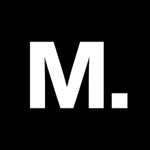
Acerca de Monotype
La Biblioteca Monotype es una de las mayores y más completas colecciones de tipos de letra del mundo, con diseños originales de importancia histórica y una nueva gama de diseños contemporáneos y de moda fuentes. La Biblioteca Monotype incluye miles de clásicos atemporales, revivals artesanales y diseños originales de muchos de los diseñadores tipográficos y fundiciones más innovadores de la historia. Esta biblioteca distintiva y galardonada de primera calidad fuentes ofrece a marcas y diseñadores una selección amplia y fiable de tipos de letra para una tipografía expresiva en impresión y en pantalla. La página de la Fundición Premium puede consultarse aquí.
Seguir leyendo
Leer menos